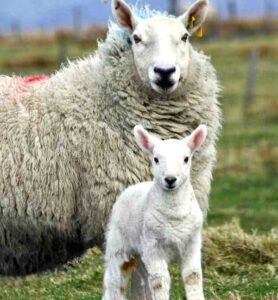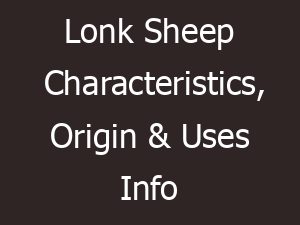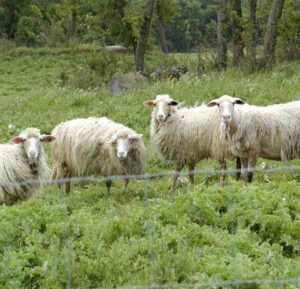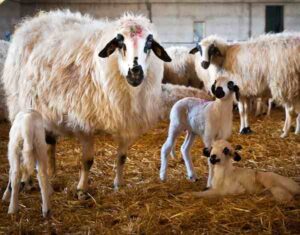The Portland sheep is a very old breed of domestic sheep from United Kingdom. It was named from the Isle of Portland in Dorset, England.
It was once very common in Dorset, but now is one of the England’s rarest sheep breeds. It was one of the breeds used in the development of the popular Dorset breed.
The breed nearly became extinct in the 1970s, and is still at risk. But the breed has now recovered through efforts of dedicated breeders and with the help of the Rare Breed’s Survival Trust.
As one of the very old tan-faced breeds native to heathlands, the Portland sheep was a primary contributor to the Dorset breed.
The Portland was under pressure from other breeds by the early 20th century, and the last Portland sheep left the island in 1920.
Fancy’s Family Farm, a community farm on the Isle of Portland is home to the only flock of the Portland Sheep breed on the island. Read some more information about this sheep breed below.
Portland Sheep Characteristics
Portland sheep are small to medium sized animal. They have a cream fleece and golden tan face and legs. The lambs are born a russet red color, and this fades as the sheep age but the face and legs are a distinctive tan color.
Both rams and ewes are horned, but the rams have a heavy spiraled horns. And the ewes have lighter and shorter horns, being a single crescent shape.
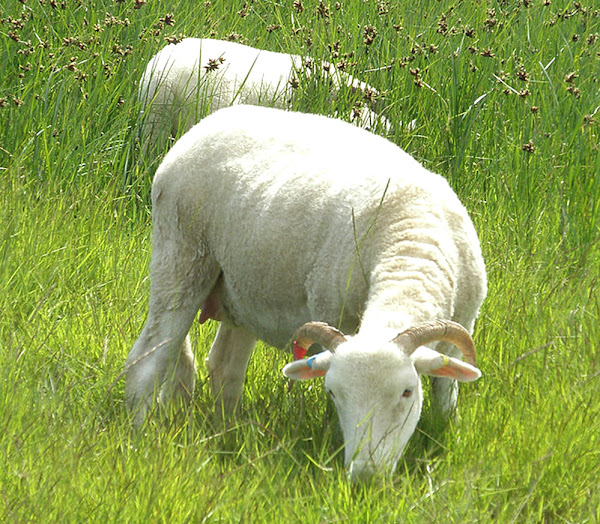
Both rams and ewes have a broad muzzle, which is generally as pale as the ‘spectacles’. The ewes tend to have a dished face, and their nose is usually black in color. Front and rear legs of the mature animals are free of wool below the hocks, and their feet are mainly black.
As a small to medium sized animal, average live body weight of the mature Portland rams is around 55 kg. And average live body weight of the mature ewes vary from 35 to 40 kg. Photo and info from Wikipedia.
Uses
Portland sheep is a meat sheep breed. It is raised mainly for meat production.
Special Notes
The Portland sheep are very hardy and active animals. They usually eat rough grasses and do browse on shrubs, so the breed is a very good choice for certain conservation grazing situations.
The breed is very good for meat production. Meat of the Portland sheep has a more complex flavor than most commercial sheep breeds. And the meat is highly priced since the time of George III.
The breed is also pretty good for wool production. They produce 2-3 kg of 50’s to 60’s down quality wool with a staple length of 2.5 to 3.5 inches.
Their wool is suitable for hosiery and hand-kitting yarns. The ewes sometimes breed out of season. And the breed was the first breed of sheep in Britain that was able to have lambs at any time of the year.
These animals can be bucket trained and is well suited to live on a smallholding. They are relatively easy to handle and also pretty good for commercial sheep farming business. However, review full breed profile of the Portland sheep in the following chart.
| Breed Name | Portland |
| Other Name | None |
| Breed Purpose | Mainly meat |
| Special Notes | Very hardy and strong animals, can eat rough grasses and do browse on shrubs, good for conservation grazing, good for meat production, the meat has a more complex flavor than other sheep breeds, pretty good for wool production, good for commercial sheep farming business |
| Breed Size | Small to medium |
| Weight | Rams weight around 55 kg, and mature ewe’s weight vary from 35-40 kg |
| Horns | Yes |
| Climate Tolerance | Native climates |
| Color | Cream |
| Rarity | Common |
| Country/Place of Origin | United Kingdom |


